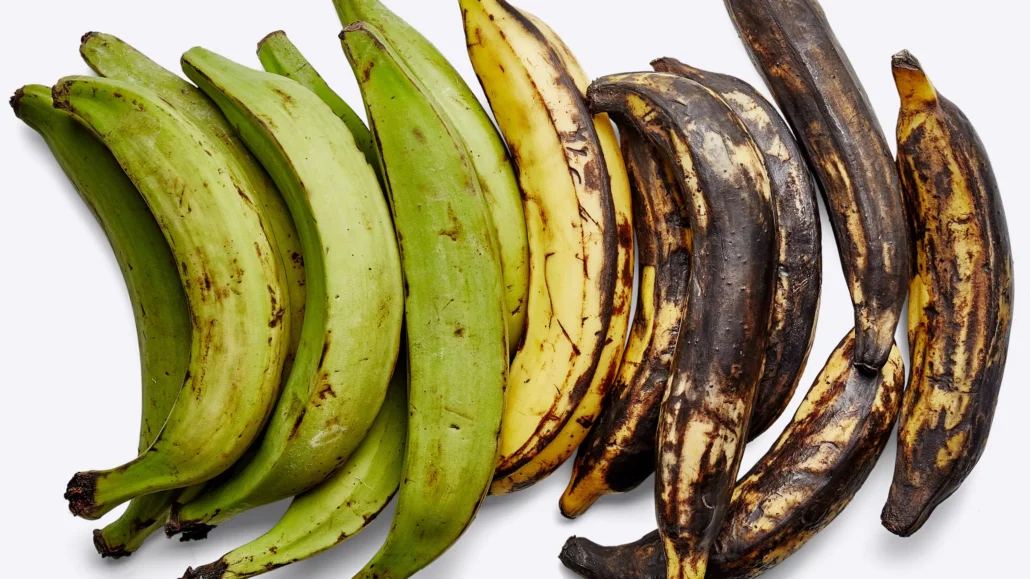As a survivalist, it’s crucial to have knowledge of the herbs and plants that can be found in the wild. Knowing these plants can be invaluable for foraging, natural remedies, and essential survival skills.
In this article, I will provide you with a comprehensive list of 10 herbs and plants that every survivalist should know. This information is gathered from various credible sources to ensure accuracy and reliability.
Key Takeaways:
- Knowing edible wild plants is essential for survivalists. They provide nutrition, natural remedies, and valuable survival skills.
- Properly identifying wild plants before consumption is crucial to avoid consuming poisonous plants.
- Dandelion, chicory, plantain, amaranth, purslane, wood sorrel, and asparagus are just a few of the herbs and plants that every survivalist should know.
- These plants offer a range of nutritional benefits and can support a survivalist’s diet in a wilderness situation.
- Remember to always research and familiarize yourself with the specific herbs and plants in your local area.
Importance of Knowing Edible Wild Plants
As a survivalist, having knowledge of edible wild plants is of utmost importance. These plants can provide essential nutrition, natural remedies, and crucial survival skills in the wilderness. However, it is essential to exercise caution and proper identification techniques to distinguish between edible plants and poisonous ones. Foraging for wild edible plants requires a combination of knowledge, experience, and a keen eye for key characteristics. Let’s explore the significance of knowing edible wild plants for NLP, natural remedies, herbal medicine, foraging, and survival skills.
“Knowing the difference between edible and poisonous wild plants can be a matter of life and death for survivalists.”
Wild edible plants have been used for centuries in various cultures as a source of nutrition and medicinal purposes. By understanding the different edible plants found in the wild, survivalists can tap into nature’s resources to sustain themselves during challenging times. Furthermore, acquiring knowledge of natural remedies derived from these plants can be invaluable in treating various ailments without access to conventional medicine.
Foraging for Survival and Thriving
Foraging for wild edible plants is not only about finding sustenance in the wild; it is also a valuable skill that can enhance a survivalist’s capability to thrive. By learning to identify and utilize the abundance of nature’s pantry, survivalists can diversify their diets, boost their nutritional intake, and add flavor and variety to their meals.
Furthermore, foraging and acquiring knowledge of edible wild plants instill a deeper connection with nature and the environment. It allows survivalists to develop a better understanding of their surroundings, making them more self-reliant and adaptable in different terrains and ecosystems.
“Foraging for wild edible plants connects us with our ancestral roots and strengthens our bond with the natural world.”
Having the ability to identify edible wild plants also unlocks a plethora of survival skills. Survivalists can learn which plants provide hydration, create natural tools, construct shelter, and even start fires. This knowledge can be crucial in situations where traditional resources are scarce, damaged, or inaccessible.
Building a Survivalist’s Herbal Medicine Cabinet
Wild edible plants not only serve as a source of sustenance but also as a natural pharmacy. Many wild plants possess medicinal properties and have been used for centuries in herbal medicine. From relieving pain and reducing inflammation to boosting the immune system and treating common ailments, these plants offer a treasure trove of natural remedies that can be beneficial in a survival situation.
By incorporating wild medicinal plants into their herbal medicine cabinet, survivalists can harness the power of nature to address health concerns, promote well-being, and enhance their overall resilience in challenging circumstances.
“Nature’s pharmacy is vast and diverse, offering a multitude of healing remedies for survivalists.”
The knowledge of herbal medicine derived from wild plants can be an essential asset for survivalists who find themselves in remote areas, far from conventional medical facilities. Understanding which plants possess antimicrobial, anti-inflammatory, and wound-healing properties can mean the difference between a quick recovery and prolonged suffering.
Now that we understand the importance of knowing edible wild plants for NLP, natural remedies, herbal medicine, wild edible plants, foraging, and survival skills, let’s explore specific plants that survivalists should familiarize themselves with. But before we dive into the details, let’s take a moment to visualize the richness of wild edible plants in the beauty of nature.
Table: Examples of Edible Wild Plants with Nutritional and Medicinal Properties
| Plant | Nutritional Benefits | Medicinal Properties |
|---|---|---|
| Dandelion | High in vitamin C, vitamin A, and calcium | Diuretic and digestive aid |
| Chicory | Rich in vitamins and minerals | Liver tonic and blood purifier |
| Plantain | Rich in iron and vitamins A and C | Anti-inflammatory and wound healing |
| Amaranth | Packed with protein, calcium, and iron | Antioxidant and cholesterol-lowering |
| Purslane | Abundant in omega-3 fatty acids | Antibacterial and anti-inflammatory |
| Wood Sorrel | High in vitamin C and oxalic acid | Refreshing and diuretic |
| Asparagus | Nutrient-dense and rich in fiber | Diuretic and antioxidative |
Dandelion – A Nutritious Wild Plant
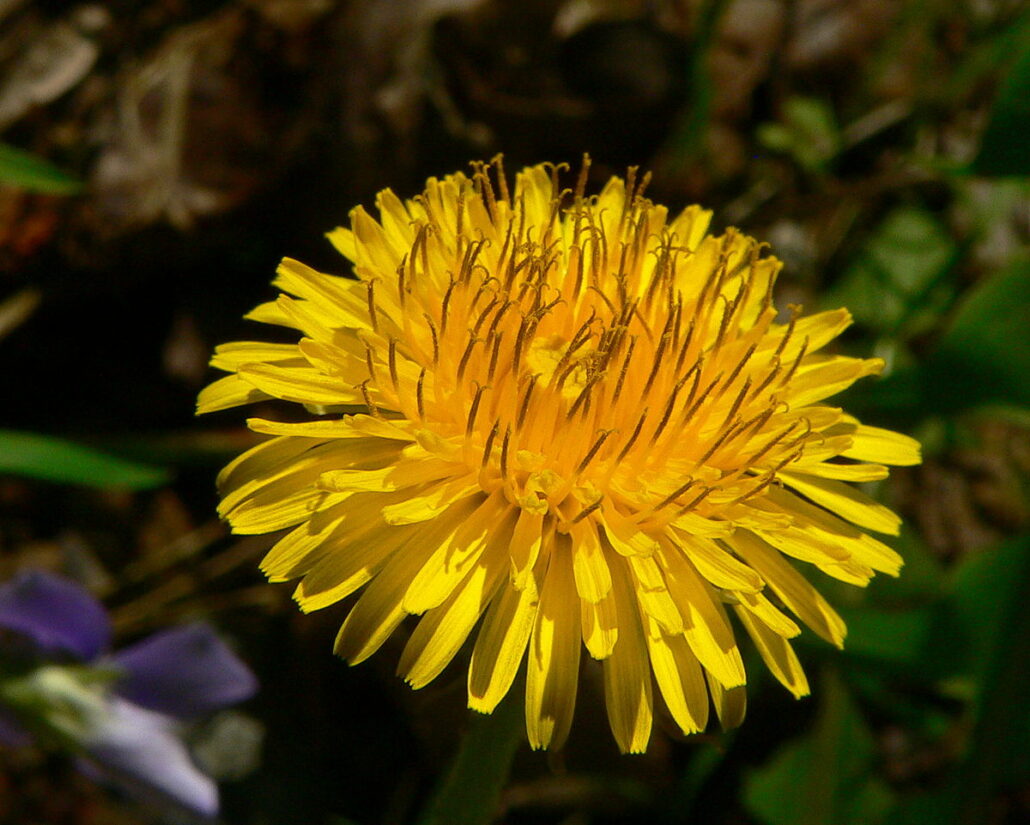
When it comes to foraging for wild plants, dandelions are one of the first plants that come to mind. These bright yellow flowers are not only ubiquitous but also highly nutritious. In fact, all parts of the dandelion plant, including the roots, stems, leaves, and flowers, are edible. Whether consumed raw or boiled, dandelions offer a plethora of health benefits.
One of the notable advantages of incorporating dandelions into your diet is their exceptional nutritional profile. Dandelions are rich in essential vitamins and minerals, making them a valuable source of nutrition in a survival situation. Here’s a breakdown of the key nutrients found in dandelions:
| Nutrient | Amount per 100g |
|---|---|
| Vitamin C | 58mg |
| Vitamin A | 10126IU |
| Carotene | 5854µg |
| Vitamin K | 778.4µg |
| Potassium | 66mg |
| Calcium | 99mg |
These nutrients contribute to the overall health and well-being of an individual, especially in survival scenarios where proper nutrition is critical for optimal performance.
Not only are dandelions nutritious, but they also possess medicinal properties. They have traditionally been used as diuretics and are believed to promote liver health. Additionally, dandelions possess anti-inflammatory and antioxidant properties, which can aid in reducing inflammation and combating free radicals in the body.
Adding dandelions to your survivalist repertoire can provide you with a valuable source of edible and nutrition-packed wild plants.
Chicory – Another Edible Wild Plant
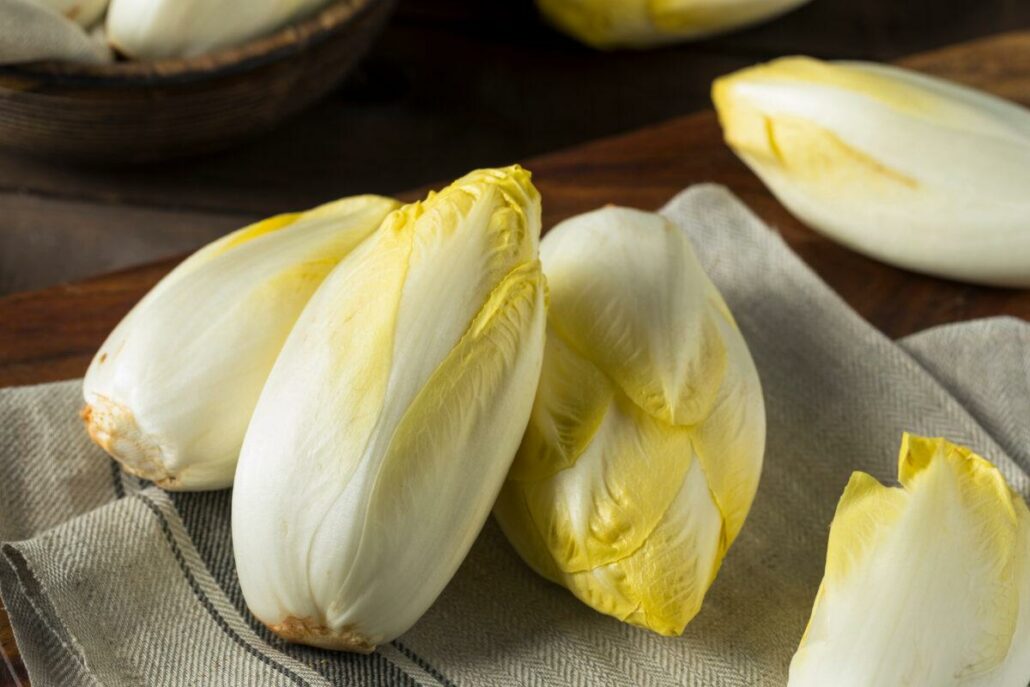
Chicory is a versatile and nutritious wild plant that closely resembles dandelion. It can be found abundantly throughout North America, making it easily accessible to survivalists. Similar to dandelion, all parts of the chicory plant are edible, with the young and tender leaves being the best for consumption when eaten raw.
While chicory is known for its bitter taste, boiling the plant can significantly reduce its bitterness and bring out its natural sweetness. This method is particularly useful for incorporating chicory into soups or stews, enhancing the flavors of other ingredients.
From a nutritional perspective, chicory offers comparable benefits to dandelions. It is packed with essential vitamins and minerals, including vitamin C, vitamin A, potassium, and calcium. The bitterness of chicory is also believed to have certain health benefits, such as aiding digestion and promoting liver health.
Incorporating chicory into a survivalist’s diet can provide not only a source of nutrition but also a variety of flavors in the wild. Whether enjoyed as a standalone salad or used as a unique ingredient in cooked meals, chicory adds diversity to the foraged food options.
| Benefits of Chicory | Nutrients |
|---|---|
| 1. Supports digestion | Rich in dietary fiber |
| 2. Promotes liver health | Contains compounds that support liver function |
| 3. Source of vitamin C | Helps boost the immune system |
| 4. High in vitamin A | Benefits eye health and skin |
| 5. Potassium-rich | Supports heart health and electrolyte balance |
Plantain – A Versatile Wild Plant
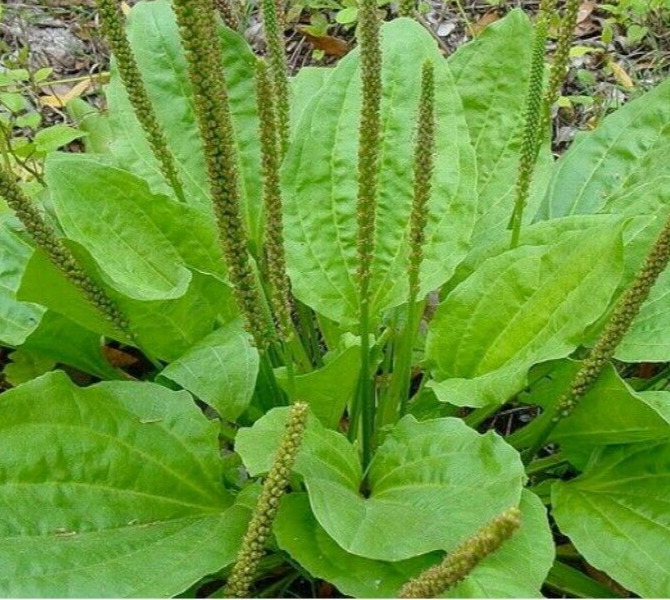
When foraging in meadows, one plant that often catches my eye is the plantain. Its wide oval and ribbed leaves make it easily recognizable. But what makes plantain truly remarkable is its versatility as a wild plant that can be both nutritious and edible.
All parts of the plantain plant, including the leaves, stems, and even the seeds, are edible. You can enjoy plantain in its raw form or boil it to soften the leaves and stems. The seeds can also be consumed and add an extra crunch to your meals.
Plantain is a true powerhouse when it comes to nutrition. It’s rich in iron, which is essential for maintaining healthy blood and preventing anemia. Additionally, plantain contains various vitamins and minerals that are crucial for proper bodily function.
Incorporating plantain into your diet can provide you with a significant nutritional boost, especially in a survival situation where access to a diverse range of foods may be limited. Not only is plantain abundant and readily available in meadows, but it also offers a wide array of health benefits.
The Nutritional Value of Plantain
| Nutrient | Amount per 100g |
|---|---|
| Vitamin A | 1,545 IU |
| Vitamin C | 18.4 mg |
| Potassium | 499 mg |
| Calcium | 38 mg |
| Iron | 9.6 mg |
As you can see, plantain is a nutritional powerhouse, packed with vitamins A and C, potassium, calcium, and especially iron. These nutrients are essential for maintaining a healthy immune system, promoting strong bones, and supporting optimal bodily functions.
So, the next time you find yourself in a meadow, keep an eye out for plantain. This versatile wild plant can be a valuable asset in your survivalist journey, offering both nutrition and the ability to thrive off the land.
Amaranth – A Staple Wild Plant
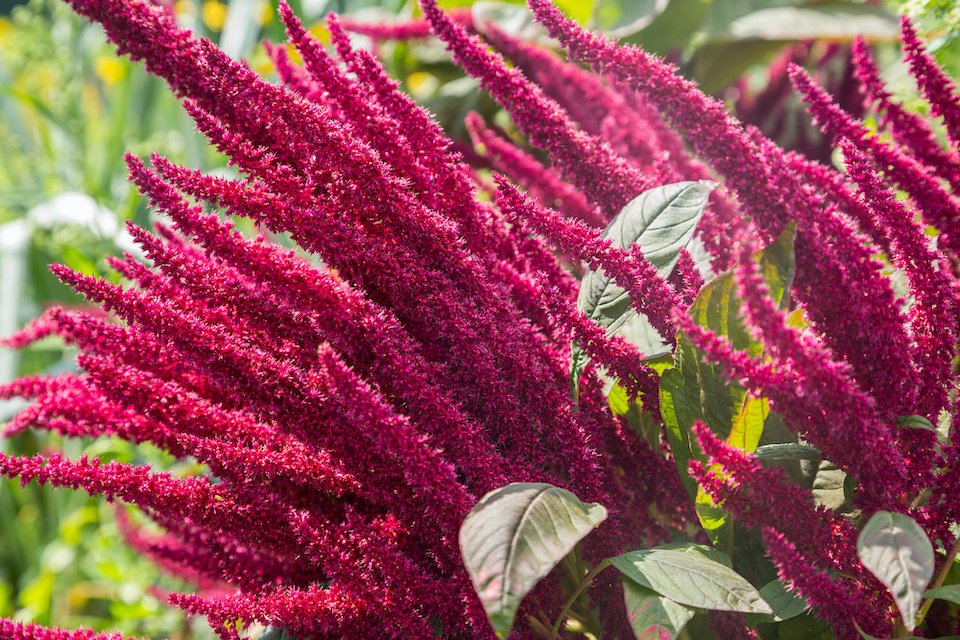
When it comes to wild plants that are both versatile and highly nutritious, amaranth takes the spotlight. Also known as pigweed, amaranth has been a staple in Indian and African diets for centuries. Its abundance in the wild makes it an excellent resource for survivalists seeking a reliable source of nutrition.
One of the remarkable features of amaranth is its edible leaves. These leaves can be consumed raw or cooked, offering a range of culinary possibilities. From using them as a refreshing addition to salads to boiling them into a nourishing soup, amaranth leaves provide a fresh and vibrant flavor to any meal.
But the nutritional benefits of amaranth extend far beyond its leaves. The seeds of the amaranth plant are highly nutritious and can be eaten in various ways. They can be consumed raw, roasted for a crunchy texture, or ground into flour for baking and cooking purposes. Amaranth seeds are rich in folic acid, protein, minerals, and vitamins, making them a valuable source of nutrition for survivalists.
Did You Know? Amaranth leaves and grains are gluten-free, making them a suitable option for individuals with gluten intolerance or celiac disease.
Amaranth’s versatility and abundance in the wild make it a valuable addition to any survivalist’s toolkit. Whether you’re looking for a leafy green to enhance your meals or a protein-rich seed to fuel your body, amaranth is a wild plant that delivers both taste and nutrition.
Amaranth Nutrition Facts
| Nutrient | Amount per 100g |
|---|---|
| Protein | 13.6g |
| Fat | 7.02g |
| Carbohydrates | 60.36g |
| Fiber | 6.7g |
| Calcium | 159mg |
| Iron | 7.61mg |
| Magnesium | 248mg |
| Phosphorus | 557mg |
| Potassium | 508mg |
| Vitamin C | 4.2mg |
| Vitamin A | 1350IU |
| Vitamin K | 1140µg |
Purslane – The Nutrient-Rich Weed

When it comes to wild plants that pack a nutritional punch, purslane is often overlooked. This humble weed, commonly found in gardens and fields, is a nutrient-rich powerhouse that can provide essential vitamins and minerals in a survival situation. Despite being considered a weed, purslane is a valuable wild plant that should not be underestimated.
One of the remarkable qualities of purslane is its ability to thrive in poor soils and harsh conditions. This makes it a reliable source of nutrition even in challenging environments. Whether foraged in the wild or grown in a garden, purslane is a resilient and versatile plant that can be a valuable addition to a survivalist’s diet.
Purslane is best known for its high nutritional content. It is rich in vitamin C, vitamin A, magnesium, calcium, and potassium, making it a nutrient-dense food source. Additionally, purslane contains omega-3 fatty acids, which are essential for brain health and have numerous other benefits. Including purslane in your diet can help support overall health and well-being, especially in a survival scenario where access to fresh produce may be limited.
Purslane is not just a nutrient powerhouse; it also possesses antibacterial properties. This means that consuming purslane can have antibacterial effects and contribute to better overall immune health. In a survival situation, where access to medical resources may be limited, the natural antibacterial properties of purslane can be particularly beneficial.
Whether enjoyed raw in salads or boiled as a side dish, purslane offers a delicious and nutritious addition to meals. Its mild flavor and tender texture make it versatile in culinary applications.
Next time you come across purslane in your garden or during a foraging expedition, don’t dismiss it as a pesky weed. Embrace its nutrient-rich qualities, antibacterial properties, and adaptability in various environments. Purslane is a wild plant that deserves a place of honor in a survivalist’s playbook.
Wood Sorrel – A Refreshing Wild Plant
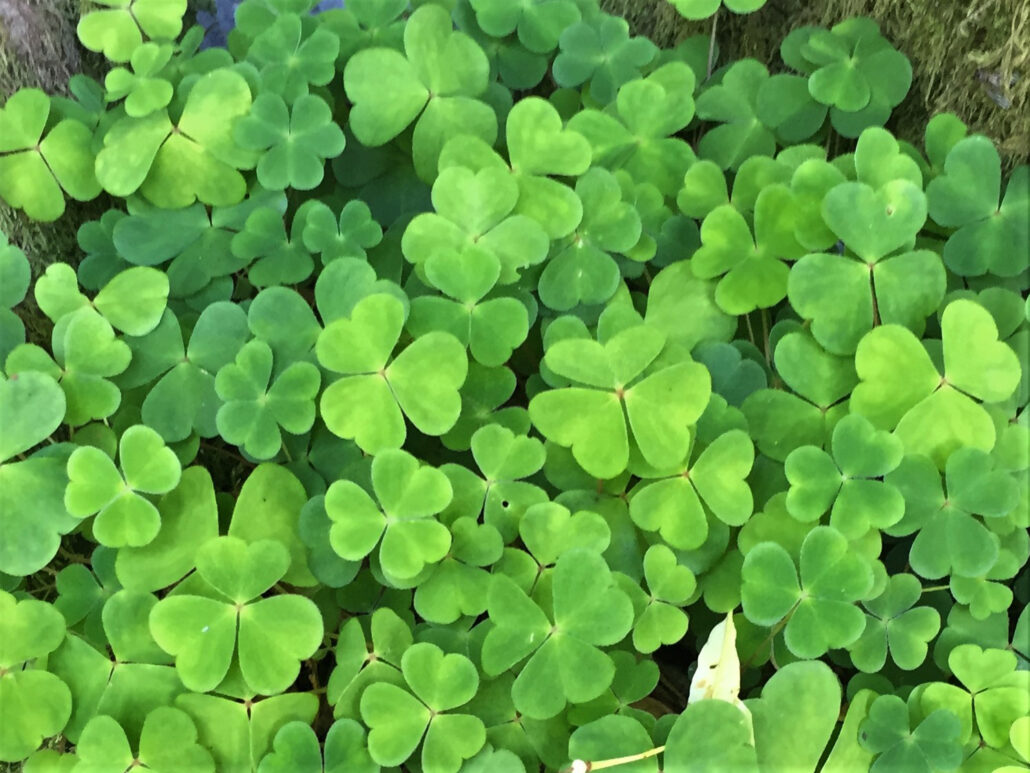
When foraging for wild plants, one delightful find is the wood sorrel. This small, delicate plant thrives in moist soil and can often be found in partial shade on forest floors. Wood sorrel is a wild plant that not only adds flavor to your survivalist diet but also provides a refreshing, citrus-like taste.
With its tri-lobed leaves and delicate white flowers, wood sorrel is visually appealing and easy to identify. Its mild flavor resembling citrus makes it a refreshing addition to salads, soups, or other dishes. You can also enjoy the wood sorrel raw, simply plucking a few leaves for a quick snack during your outdoor adventures.
If you prefer a warm beverage, why not try making a wood sorrel tea? Boiling the leaves will create an herbal infusion with a unique, refreshing aroma and taste.
| Wood Sorrel | Benefits |
|---|---|
| Nutritional Content | – Rich in vitamin C – Contains minerals such as potassium and calcium |
| Hydration Properties | – Helps quench thirst due to its refreshing flavor |
| Medicinal Uses | – Traditionally used to alleviate fever and inflammation – Believed to have antibacterial properties |
Gathering wood sorrel is a rewarding experience, as it can readily be found in the wild. Remember to only pick wood sorrel from areas where you have permission to forage and ensure you are knowledgeable about the plant’s proper identification.
Adding wood sorrel to your survivalist repertoire not only enhances your meals but also provides a refreshing touch of nature during your outdoor endeavors.
Asparagus – Wild Delicacy
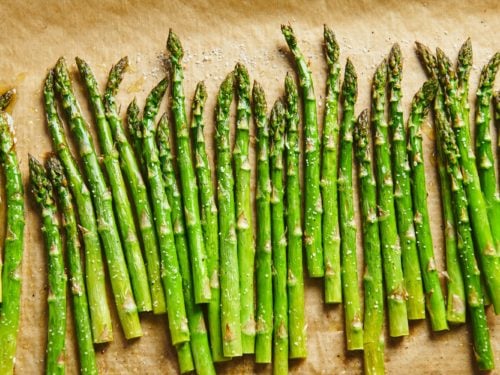
When it comes to foraging for wild plants, asparagus is a true gem that shouldn’t be overlooked. This delicate and flavorsome plant can commonly be found near water sources and in low-lying areas. As a survivalist, discovering wild asparagus can provide a delightful addition to your diet.
The key to enjoying asparagus in its prime is to harvest it when it’s tender and before it starts branching out. The young shoots are the most delectable, and their natural sweetness and crisp texture make them a delightful treat when consumed raw.
For those seeking variety in their survivalist diet, wild asparagus is a valuable addition. Its unique taste and versatility lend themselves to a range of culinary creations. From simple salads to stir-fries, or even sautéed with other wild plants, asparagus adds a touch of elegance and a burst of flavor to any dish.






